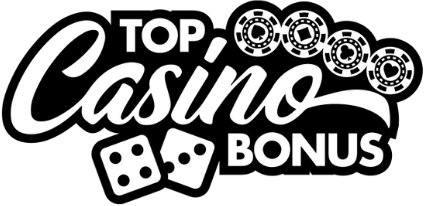Mastering soft hands vs. hard hands in blackjack
Most blackjack players fumble when facing soft hands, heck, even some so-called pros don’t know which move buys safety and which one signs a death warrant. The distinction between soft and hard hands isn’t just textbook theory; it’s the backbone of smart blackjack strategy. Miss this core foundation, and you’re operating in the dark, no matter how flashy the interface or polished the dealer’s smile happens to be.
Table of contents
Understanding soft hands vs. hard hands
Let’s cut through the buzzwords. A soft hand is any hand that includes an Ace counted as 11 without busting. A hard hand either has no Ace or has an Ace that must be counted as 1 to avoid busting. You’d be shocked how many players treat an Ace like some kind of guaranteed win, it isn’t. It’s flexible, yes, but also a trap if you overplay it.
Recognizing the dynamic nature of soft hands
With a soft hand, you’ve got backup, the Ace lets you take risks you can’t afford with a hard hand. Take a soft 17, for instance (Ace-6). You hit it, and worst case, you turn the Ace into a 1. But I’ve sat beside folks who stand on soft 17 against a dealer’s 10, a move as self-sabotaging as folding pocket aces pre-flop.
When the Ace turns rigid
Let’s say you draw an 8 to that Ace-6. Now you’ve got 15, hard. No more cushion, no more flexibility. Understanding when that shift happens, when soft turns hard in your hand, is one of those subtle details that separates seasoned betters from tourists burning through their chips.
How to play soft hands effectively
Most online guides will throw a basic strategy chart at you and call it a day. But those matrices can’t teach you feel, judgment honed over hundreds of games. Here’s what decades at the felt reveal that flowcharts miss.
When to double down
Soft hands are prime time for double downs, especially soft 17 or soft 18 against weak dealer upcards (3 through 6). It’s not a gamble; it’s pressure, applied at the right moment. Letting the dealer bust himself while you increase your bet on a high-ceiling hand is blackjack judo.
Making use of forced flexibility
With soft 13 through soft 17, you’re usually hitting, even doubling in the right spots. The secret sauce? Keep an eye on the dealer’s upcard like a hawk. Your hand might be squishy, but the real advantage is exploiting the dealer’s stiff scenarios. If they show a 5 or 6, push your advantage; if it’s a 9 or 10, retreat and reload.
Approach to hard hands with discipline
A hard hand is all about restraint. Every hit risks total ruin, so you’ve got to know what’s worth risking it all. Unlike soft hands, your options narrow, and discipline becomes king. That’s where most folks blow it, they try to play hard hands like soft ones.
Don’t chase false hope
Standing on hard 16 against a dealer’s 10? Painful, but sometimes necessary. It’s like folding queens when there’s an Ace and a King showing, you hate it, but the math doesn’t lie. Don’t let gambler’s hope push you into suicidal hits. Know your escape hatch, and know when it’s welded shut.
Split? Maybe. Double? Rarely
Hard 12 through 17 is a battlefield zone. Most double downs fade here unless the dealer’s upcard is vulnerable. I used to see gamblers double hard 10s against 10, even 11s. Makes me roll my eyes every time. Control, not bravado, is what wins the war with hard hands.
Live dealer environments and hand rigidity
The live dealer blackjack experience adds layers. Players change pace, human elements seep in. That’s where knowing your soft vs. hard situation by heart gives you an edge, no hesitations, no second guesses.
Under pressure, real or simulated, your understanding of hand strength becomes your true north. You can’t lean on software cues; you need instinct that’s been tempered like Damascus steel. Whether you’re dealing with a soft 18 or a hard 14 against the clock, training beats guessing every day of the week.
Software platforms and gameplay nuance
Not all blackjack tables run with equal fidelity. Platforms affect pace, UI, and options, which in turn influence how players handle soft and hard hands. Take Cryptologic software, clean interface, fast play, but the AI’s cues can lull beginners into bad habits.
Compare that to Betsoft Gaming’s atmospherics, with smooth graphics but slower tempo. That extra few seconds can give novices enough time to override a panic move. And then there’s Aristocrat-powered tables, their heritage in land-based systems means more traditional rulesets, favoring those who play by the book.
If you’re using Amaya platforms, take note, the game presentation blends efficiency with detail, making it easier to visualize hand transitions. That said, regardless of the software, the player’s responsibility doesn’t end at the deal. Awareness is armor. Slack off, and even a soft 19 won’t save you.
The real mindset of mastery
Soft hands aren’t forgiving, they’re testy allies. Hard hands aren’t cursed, they’re strategic puzzles. Every hand dealt in blackjack is a negotiation with fate, and your knowledge is the leverage. Stop treating cards like talismans and start treating them like data. Interpret them. Respect them.
I’ve watched grinders burn bankrolls trying to brute-force blackjack with luck alone. They always end the same way, frustration, excuses, and muttered nonsense about “unlucky shoes.” What separates sharp players is this: they learn to read the noise.
Think of soft and hard hand mastery like reading wind before firing an arrow. The untrained eye sees nothing. An expert feels everything. Hold the wind, release at the right second, and land your mark. Every time.





0 Comments